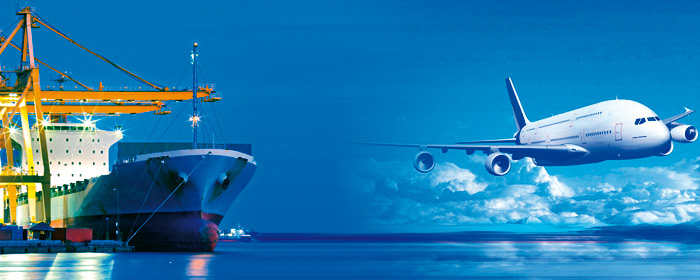When you need to ship your goods from one country to another, or even one continent to another, you need to know your options. There are many companies that will offer you big promises, but you might not know what’s true and what’s false. There are some universals that you can usually rely on when it comes to long distance shipping. Two of the most common types of international shipping are air freight and sea freight. It’s important for you to know the advantages and disadvantages of each.
Advantages of Air Freight
Air freight is by far the fastest of your shipping options. Airplanes move at close to the speed of sound, so you can put a package on a plane in London and have it land in California that same day. There’s no other type of freight that works so quickly. Air freight is also one of the most abundant; there are hundreds of flights leaving airports all over the world all the time. It shouldn’t be very difficult to get your pallet on a plane. If you’re shipping a few goods, or if you need the goods moved quickly, experienced pallet couriers will probably advise you to use air freight.
Disadvantages of Air Freight
Air freight can have disadvantages, namely the price. Packages, when being shipped through the air, are priced according to the size of the package as well as the weight. Since planes are much smaller than some of the other types of shipping methods, they charge much more for their space. If you want to send a lot of goods, air freight might not be your best bet.
Advantages of Sea Freight
Sea freight is probably the oldest form of freight delivery still in frequent use. One of the advantages of sea freight is the price. Items are typically priced according to their size but not their weight. So, if you have something very heavy to ship, that only takes up a little bit of a container ship, you will not pay nearly as much as you would when shipping through the air. Sea freight also allows you to ship much larger freight, because barges are much larger than cargo planes.
Disadvantages of Sea Freight
Shipping over the ocean has some pretty significant disadvantages though. For one, sea freight is very slow and unpredictable. Freighting something across the Atlantic Ocean could take weeks and, depending on the conditions at sea, the ship could easily be off schedule by several days.
You also have to consider the docking fees involved with keeping a ship at port. Since ocean liners are so large, docking fees tend to be higher for seaports than airports. If you have something that you need shipped at an exact time or just shipped quickly, then sea freight is probably not for you; it’s just too unreliable.
There are many ways to send a pallet around the world; air freight and sea freight are just two kinds. Whichever you choose, it’s important to know you’re making the most informed decision possible.

